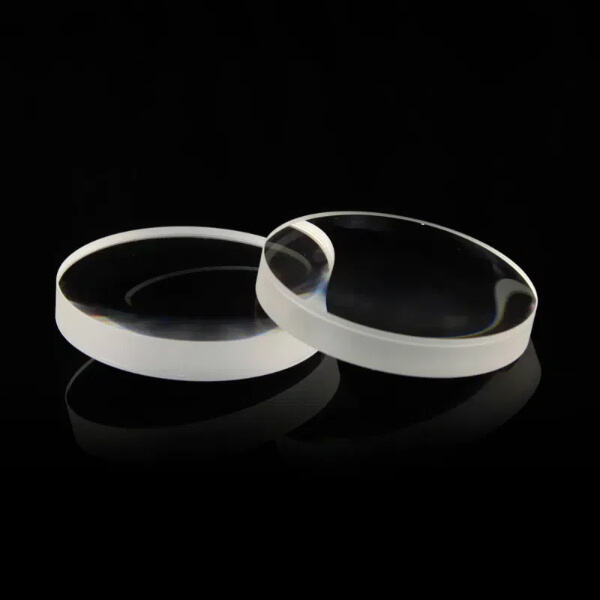
-
+86-156 60188203
[email protected] - Dazhai, Nanyang City, Henan Province China
- الأثنين - السبت 8.00 - 18.00 مغلق يوم الأحد

هل نظرت يومًا من خلال عدسة مكبرة أو نظارة؟ إذا كانت الإجابة نعم، فقد وضعت بالفعل عدسة كروية! قبل أن نستكشف ما هي العدسة الكروية، وكيف تعمل، وما أهمية العدسات الكروية في البصريات والتصوير الفوتوغرافي، دعنا أولاً نتعرف أكثر على العدسات بشكل عام. سنلقي أيضًا نظرة أقرب على الأنواع المختلفة للعدسات الكروية وتطبيقاتها في حياتنا اليومية.
نوع من العدسات هو العدسة الكروية التي تشبه كرة. هذا يعني شكل دائري قد يكون مصنوعًا من الزجاج أو البلاستيك. العدسات الكروية هي نوع مهم من العدسات يتيح لك جعل الأشياء تبدو أكبر أو أوضح. شكل العدسة التي تمر منها أشعة الضوء، في حالة العدسة الكروية، يثني تلك الأشعة. وهذا الانحناء هو ما يغير منظورنا. العدسات الكروية شائعة في الأشياء اليومية التي نعرفها جميعًا - النظارات، الكاميرات، وحتى المجاهر. إنها ضرورية لمساعدتنا على تحقيق الوضوح.
عادةً ما يسافر الضوء في خط مستقيم، وهذا هو الطريقة التي يعمل بها في ملاحظاتنا اليومية. لكن عندما يمر الضوء عبر عدسة كروية، يحدث شيء رائع — ينحني الضوء. وبالتالي,则 تحدد شكل وحجم العدسة مدى انحناء الضوء. للعدسات الكروية جانبان مختلفان. الجانب البارز يُعرف بالمقعر، بينما الجانب المنحني داخليًا يُعرف بالمحدب.
عندما يضرب الضوء الجزء المحدب من العدسة، ينحني الضوء نحو المركز. ثم، على الجانب المقعر، عندما يمر الضوء، ينحني بعيدًا عن المركز. عند انحناء الضوء، فإنه يركز، مما يمنحنا صورة واضحة لنراها. اختيار عدسة كروية يسمح لنا برؤية صور أكثر وضوحًا وتفاصيل أكبر.

تلعب العدسات الكروية دورًا رئيسيًا في البصريات والتصوير. هذه تمكننا من رؤية الأشياء التي من الصعب رؤيتها بالعين المجردة بسبب صغر حجمها أو بعد مسافتها عنّا. مثال على ذلك هي العدسات الكروية التي تعد مكونًا مهمًا في الكاميرات. تسهم هذه العدسات في تركيز الضوء على مستشعر الكاميرا الذي يسجل الصورة التي نرغب في تصويرها. تتيح لنا العدسات الكروية مشاهدة النجوم والكواكب البعيدة في السماء باستخدام التلسكوبات. وبالمثل، في المجاهر، تضخم هذه العدسات الأجسام الصغيرة لتجعلها تبدو أكبر بكثير، مما يمكّننا من رؤية التفاصيل التي لا يمكننا رؤيتها بالعين المجردة.

أنواع العدسات: العدسة المحدبة: العدسات المحدبة سميكة في المنتصف ورقيقة على الحواف؛ وهي رائعة لتكبير كل شيء وتُستخدم في الأجهزة مثل المكبرات، والتلسكوبات، وعدسات الكاميرات. باستخدام عدسة محدبة، يتم وضعها بحيث تساعدك على رؤية الأشياء البعيدة بشكل أوضح.

التشويه الكروي هو عيب بصري يمكن العثور عليه في العدسات وكذلك العدسات الكروية. يحدث هذا عندما تتجمع شعاع الضوء المار عبر عدسة كروية عند نقاط مختلفة بعد خروجه من العدسة. سيتسبب ذلك في ظهور الصور ضبابية أو مشوهة. يمكننا تطبيق عدسة واحدة أو أكثر معها لتصحيح مسار الأشعة الضوئية بدمجها معًا. حل آخر لهذا问题是 استخدام العدسات اللاكروية. أسطح العدسات الإيجابية التي ليست ذات شكل كروي. بسبب هذا التشويه الكروي، تصبح الصور أقل وضوحًا، حتى لو كانت العدسات المستخدمة ذات جودة بصرية عالية، ومع ذلك، فإن العدسة اللاكروية قادرة على تصحيح هذا التشويه الكروي وإنتاج صور أكثر وضوحًا وحدة.
مع شهادات ISO9001 وكذلك شهادات الشركات ذات التقنية العالية الجديدة في الصين، CE، SGS، تمتلك منتجاتنا من العدسات الكروية أكثر من 300 مجموعة من المعدات الكاملة، وأكثر من 10 باحثين. نحن نضمن أعلى جودة.
نان يانغ جينغ ليانغ هي شركة تصنيع مكونات بصرية بمساحة 10,000 متر مربع. تركز شركتنا على معالجة العدسات البصرية والمرايا ومعايير تصميم الأنظمة البصرية والإنتاج والمبيعات. يمكننا تلبية جميع احتياجاتك من المكونات البصرية المتعلقة بالعدسة الكروية
الميزة لدينا في عملنا هي أننا نقدم عدسة كروية، أي عدسة محدبة للمستهلكين بناءً على الرسومات المطلوبة من الحجم الصغير إلى الكبير، ويوجد أكثر من 400 نوع من النماذج قيد الإنتاج. لدينا خبرة كبيرة ويمكن تخصيص العناصر مع توفر معدات فحص كاملة.
لدينا فريق مبيعات ما بعد البيع يضم أكثر من 60 موظفًا، ولشركتنا خبرة في التعاون بشأن الصادرات والواردات المتعلقة بالعدسات الكروية. كما نعمل مع شركات بصرية وجامعات ومراكز أبحاث وغيرها. لدينا أكثر من 30000 عميل من أكثر من 80 دولة حول العالم.
Copyright © Nanyang City Jingliang Optical Technology Co., Ltd. All Rights Reserved — سياسة الخصوصية